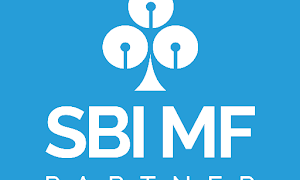With Fixed Deposit interest rates going up recently, investors looking for safe and decent returns have more reasons to invest in bank FDs. However, they may also look at bonds, depending on their needs, as an option for better returns. In an email interaction with FE PF Desk, Ankit Gupta, Founder, BondIndia.com, explains everything that investors need to know about bonds and how to decide whether they are better than FDs. Excerpts
Is it a good time to invest in bonds?
There is no specific time to make investments in bonds. It is always a good time to invest in bonds. Positive real yields exist now with bond yields higher than expected inflation over the next five years and beyond. The municipals, high yield, corporates, and emerging markets present more opportunities than any time in the recent past.
Read More: PNB Raises FD Interest Rates For Senior Citizens, Super Senior Citizens; Offers Up To 6.9%
A bondholder gets all the advantages no matter at what time during the year he/she buys bonds. It is better to invest in bonds early to reap the benefit of higher yield and accomplish your different financial goals in life.
Are bonds better than Bank Fixed Deposit?
Both the investment avenue Bonds and Bank FD have their importance. The choice of investment avenue depends on your investment needs. A brief comparison between the two will help you decide if bonds are better than Bank FD.
Should retail investors consider including bonds in their portfolio?
Yes, retail investors should consider including bonds in their portfolio. In comparison to some asset classes like stocks Bonds are typically less volatile and are considered a defensive asset class. It can help you in reducing market volatility and overall portfolio risk. Thus, including bonds in your portfolio can prove to be a great option for portfolio diversification.
How can an investor estimate return from investment in bonds?
Bonds are generally known to offer a higher rate of return. Investment in corporate bonds can help you earn interest income in the range between 7 to 13%. You can calculate the rate of return on bonds using a simple formula. You just need to consider dividing the annual payment by the market value of the bond. The return in the form of interest payment, also known as the “coupon” remains stable because the price of the bond changes due to market forces.
The formula for calculating bond price:-
Bond Price = C* (1-(1+r)-n/r ) + F/(1+r)n
r = Yield to maturity (YTM) and
n = No. of periods till maturity
F = Face / Par value of bond
How can I invest in bonds and what is the minimum amount I need to invest in?
Investing in bonds is hassle-free today. You can visit online bond platforms like bondsindia.com and follow a few simple steps to start investing in bonds.
- Create your dedicated account
- Complete your online KYC
- Login and select from the listed bonds
- Shortlist the bonds for the potential trade
- Select the payment mode and initiate the transaction
Note: You can buy also buy bonds from a broker or from an issuing government entity directly. You can buy in the secondary market or purchase individual bonds as new issues.
You can commence your investment journey in bonds with a low amount. You only need a minimum amount of Rs. 1000/- (face value) to start investing in bonds. It can be increased in multiples of face value and can go upward depending on the face value of individual bonds. Also, there is no maximum limit for the investment in Bonds.
How to choose a bond to invest in? What are the options currently available?
You can consider the following prior to choosing a bond to invest:
- Your short-term and long-term financial goals
- Your appetite for risks
- Risk and reward
- Creditworthiness and exit options
- Return on investment
- Consider the tax slab
A few preferable options available in the corporate bonds type include Piramal offering 11-11.50%, Shriram offering 8.50-9.50%, and L & T offering 7.50-8% approx. return on your investment.
What are the risks of investing in bonds?
Bonds have relatively low risks. The notable risk in bond investment is the rate of interest (coupon). Interest rate risk affects bond prices which can be minimized by investing in bonds with different durations and diversifying your investment portfolio. Investment in bonds is relatively safe. Higher rated bonds are as safe as risk-free (i.e., ‘AAA’, ‘AA’ & ‘A’).
Other key points one should know before investing in bonds
Considering the following points before investing in bonds can help you take better decisions:
- Check if the bonds is Secured or Unsecured
- Creditworthiness of the bond issuer
- Coupon rate
- Maturity
- Callability
- Tax factor
- Liquidity & exit option
How is income from bonds taxed?
The income from bonds is taxed under the Income-Tax Act, 1961 according to the relevant bondholder’s tax status. The maximum slab rate is 30 %. The long-term capital gains (LTCG) are taxed at a rate of 10% without indexation while the short-term capital gains (STCG) are taxed at applicable tax slab rates.
If the holding period in the case of unlisted bonds is more than 36 months, the gains from these unlisted bonds come under LTCG. The rate of taxation applicable here is 20% without indexation.





































